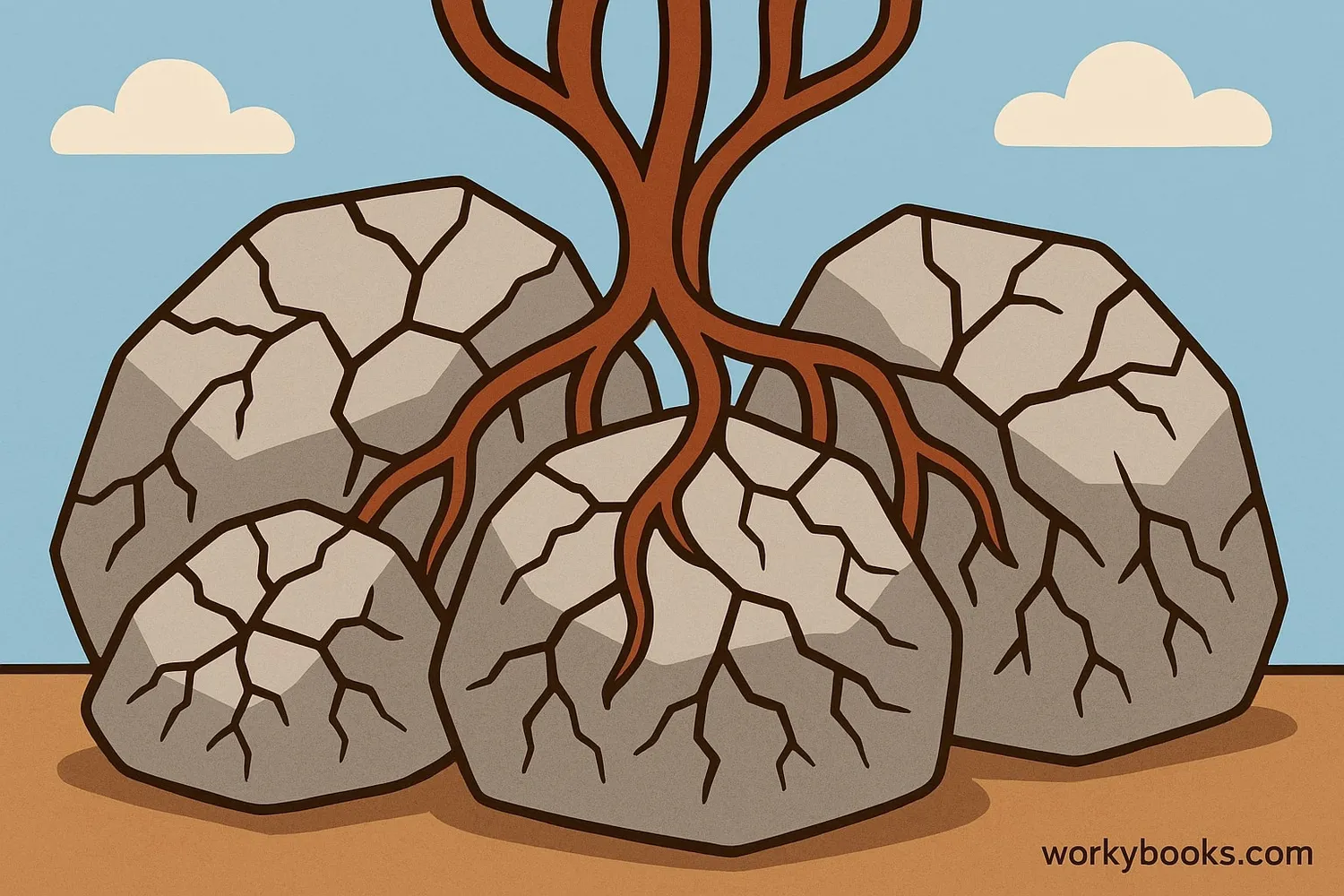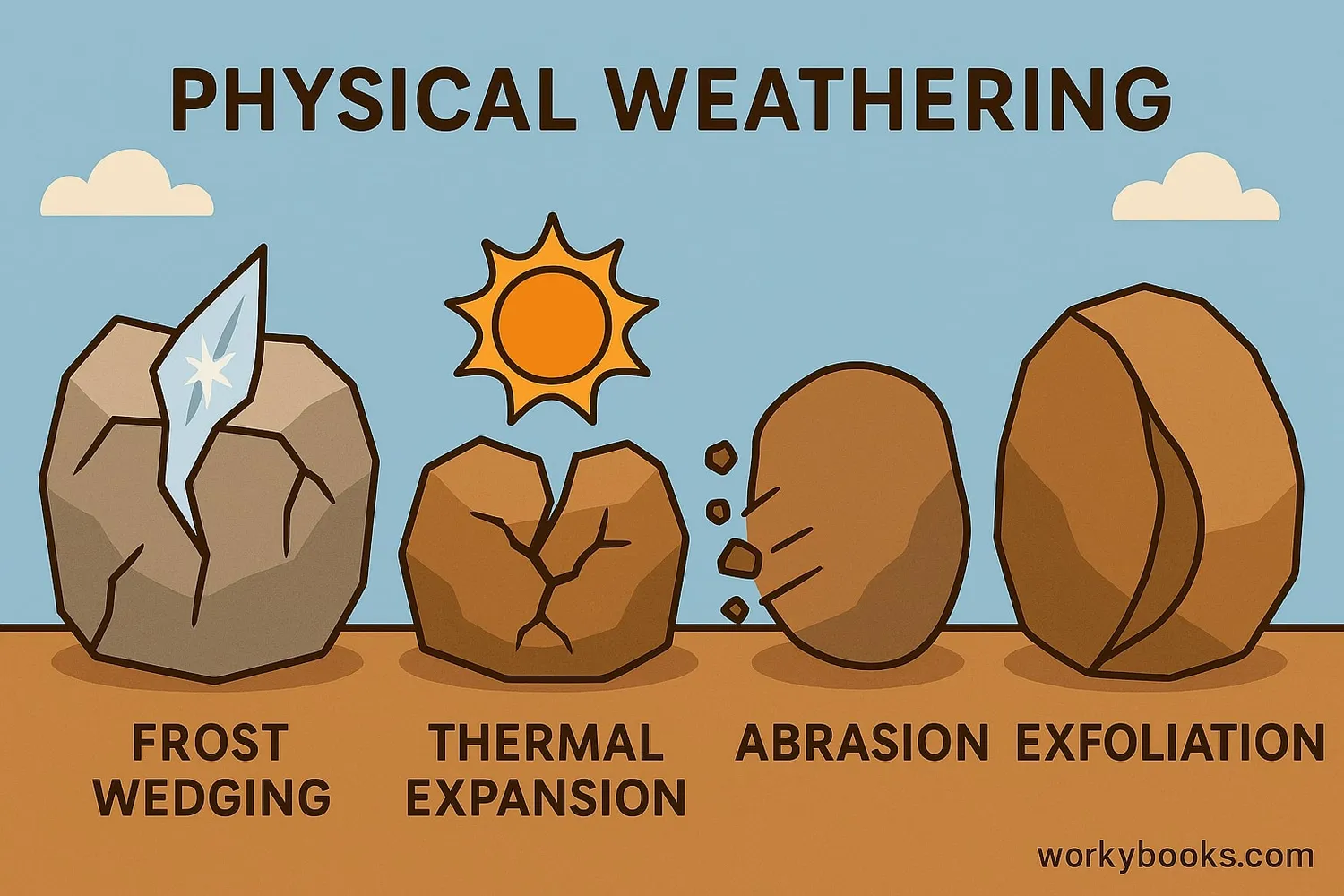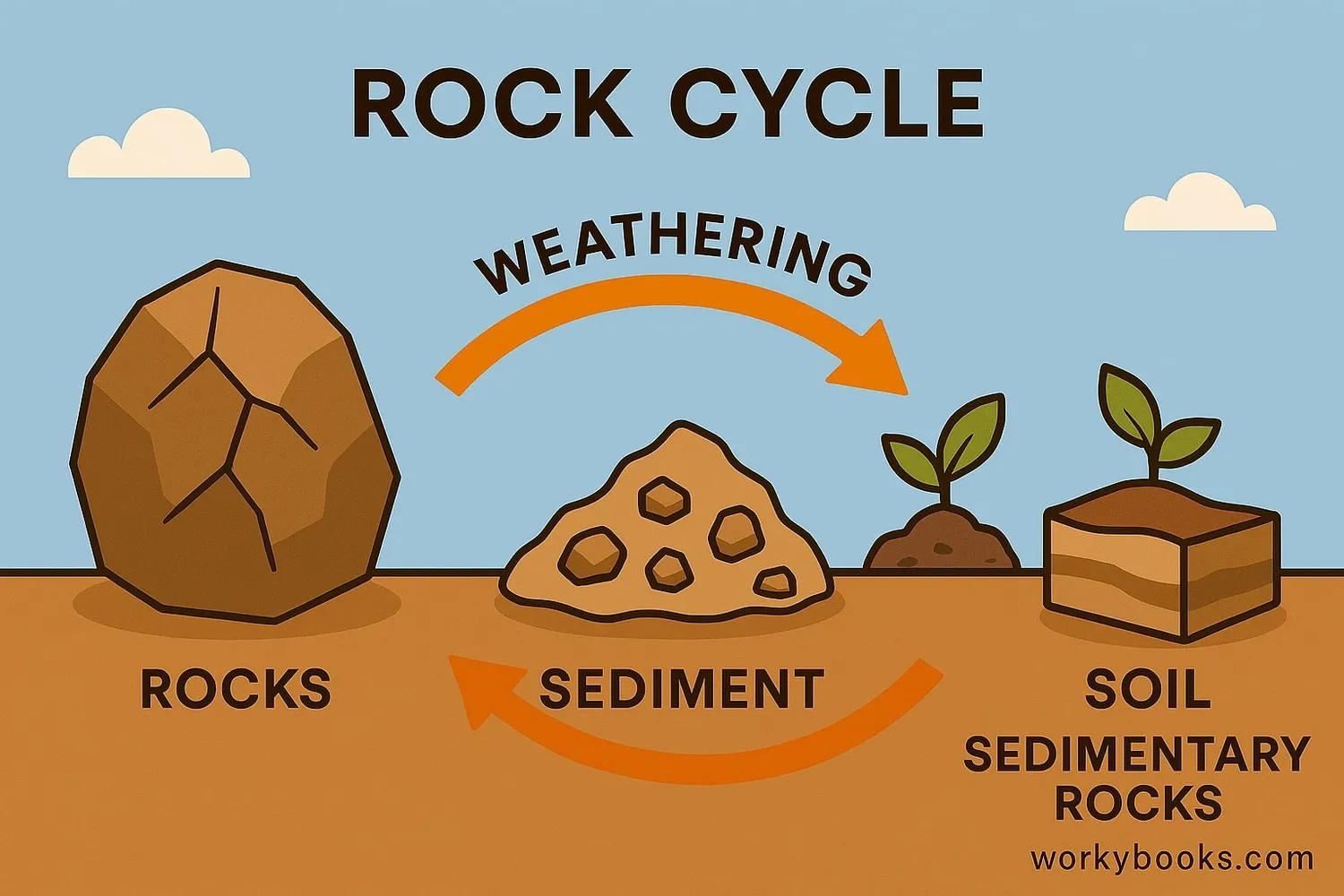Physical Weathering - Definition, Examples, Quiz, FAQ, Trivia
Discover how rocks break down into smaller pieces through natural processes
What is Physical Weathering?

Physical weathering, also called mechanical weathering, is the process where rocks break apart into smaller pieces without changing their chemical composition. It's like when you break a cookie into crumbs - it's still cookie material, just in smaller pieces.
Think of physical weathering as nature's way of breaking down rocks through physical forces. This happens all around us in nature through processes like temperature changes, freezing water, plant growth, and even animals walking on rocks. These forces create stress on rocks until they eventually crack and break apart.
Weathering Fact!
Physical weathering doesn't change what the rock is made of - it just breaks it into smaller pieces of the same material!
How Physical Weathering Works

Physical weathering happens through several different natural processes. Here are the main ways rocks break down physically:
Frost Wedging
Water enters cracks, freezes, expands, and widens the cracks
Thermal Expansion
Rocks expand when heated and contract when cooled, causing stress
Root Wedging
Plant roots grow into cracks and pry rocks apart as they grow
Abrasion
Rocks rub against each other, wearing away surfaces
Exfoliation
Rock layers peel away like onion skin due to pressure release
Each of these processes works slowly over time. Frost wedging is especially powerful in colder climates where temperatures regularly rise above and fall below freezing. Thermal expansion is more common in deserts where there are big temperature differences between day and night.
Water Expansion!
When water freezes, it expands by about 9%. This expansion creates tremendous pressure - enough to split strong rocks!
Why Physical Weathering is Important

Physical weathering plays a crucial role in shaping our planet and supporting life. Here's why it's so important:
Soil Formation
Breaks rocks down into smaller pieces that eventually become soil
Landscape Shaping
Creates amazing natural formations like arches, canyons, and caves
Rock Cycle
Starts the process of recycling Earth's materials through the rock cycle
Without physical weathering, we wouldn't have:
• Soil for plants to grow in
• Sandy beaches
• The beautiful rock formations in national parks
• Raw materials for construction and industry
Physical weathering works together with chemical weathering and erosion to continuously reshape Earth's surface over millions of years.
Physical Weathering Knowledge Check
Test your understanding of physical weathering with this quiz. Answer all 5 questions to see how much you've learned.
Frequently Asked Questions
Here are answers to some common questions about physical weathering:
Interesting Physical Weathering Facts
Discover some amazing facts about physical weathering!
Extreme Temperatures
In deserts, rocks can experience temperature changes of 50°F (28°C) or more between day and night! This rapid expansion and contraction causes them to crack and break apart.
Powerful Ice
Expanding ice can exert pressure of up to 30,000 pounds per square inch - more than enough to split the hardest rocks!
Famous Formations
Many famous rock formations like Utah's Delicate Arch and California's Half Dome were shaped largely by physical weathering processes over millions of years.
Tree Power
Tree roots can exert enough pressure to lift sidewalks and break foundations. In nature, this same power breaks apart rocks as roots grow into tiny cracks.


